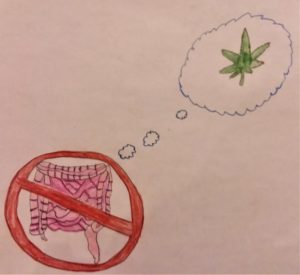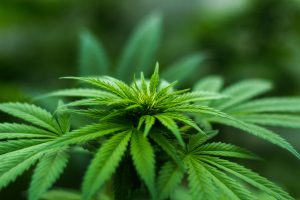
Introduction
If someone had advocated for the legalization of recreational marijuana a few decades ago, he or she would have laughed at. After all, marijuana is a drug and drugs are bad. Yet, over the years research has appeared that contradicts this. Suddenly, there is debate on whether marijuana has any medical uses and whether or not it should be legalized, both recreational or medically.
Recent studies and testimonials from patients discuss how marijuana may be useful in treating epilepsy, cancer, AIDS, and other disorders. There is also a growing body of evidence that marijuana may not be as harmful as previously thought. But yet, there is still a strong stigma against marijuana. Is the drug really deserving of all this controversy?
Endocannabinoids
In general, most chemicals and neurons in the brain can be classified as excitatory or inhibitory. Excitatory means that it increases the likelihood of a signal firing. Inhibitory decreases the likelihood. Depending on the context, marijuana is capable of both.
The two main chemicals in marijuana: THC and CBD act on a little-known signaling system in the nervous system. They act on the endocannabinoid system. Now, THC and CBD are obviously not something that is naturally produced by the human body. Rather, neurons in the cannabinoid system produce 2-AG and AEA. These chemicals act on the two receptors: CBR1 and CBR2. AEA causes a response at CBR1, but does not too much when bound to CBR2. 2-Ag acts strongly on both receptors. Of these two chemicals, AEA is the more well-studied, yet 2-Ag is more prevalent in the brain.
[i] https://www.neurologylive.com/journals/neurologylive/2018/october-2018/exploring-cb1-cb2-various-neurological-conditions
Imagine two neurons in the brain. Normally, the signal flows from the upstream neuron to the downstream neuron. Sometimes the upstream neuron sends a signal to the downstream neuron to get it to stop firing. However, this causes calcium to build up in the second neuron, which really wants to fire. The second neuron than releases 2-AG to the upstream neuron that shuts off the inhibition. This happens because 2-AG binds to CBR1 and closes the calcium channels. This can lead to excitation or inhibition, depending on what the upstream neuron was doing. If the upstream neuron was inhibiting the downstream neuron, then the signal is now excitatory. If the upstream neuron was excitatory, the signal is now inhibited.
That all seems fairly simple. However, the exact nature of the individual receptors complicates things. CBR1 can actually increase cAMP in some cases. (cAMP is typically inhibited if calcium is inhibited). In most cases, the CBR1 receptor inhibits calcium channels and is involved in inhibiting GABA, the primary inhibitory neurotransmitter in the brain. Additionally, CBR1 is heavily involved in cell proliferation and death. The receptor regulates MAPK signaling pathways including ERK and JNK. (For a summary of these pathways, click here). Essentially, activation of these pathways increase brain -derived neurotrophic factor (BDNF) which aids in cell survival.
Treatment of Various Disorders

Marijuana has come to attention today partially because of its possible medicinal properities. Indeed, drugs that act on the CBR1 receptors have been helpful in treating disorders like Huntington’s disease and Parkinson’s, which arise from an imbalance of glutamate and GABA in the brain. Drugs like marijuana are able to reset this balance.
Additionally, marijuana may aid in treating pain, lack of appetite, and seizures. Some research indicates that overeating and seizures may be linked to dysfunctions in the endocannabinoid system. The appetite stimulating effects come from the CBR1’s ability to activate the POMC neurons and release several hormones involved in eating. Little is known about how exactly CBR1 drugs are able to stop pain, but it likely involves CBR2 and the receptor TRPV1. CBD is mainly responsible for this effect, as it indirectly inhibits the CBRs. Normally, this regulates the effects of THC, controlling the potency of marijuana.
Why the stigma matters
Even with all that science, there is still a lot unknown about marijuana. The effects of chronic usage are still debated. However, there may very well be some benefits to it.
Marijuana is currently classified as a Schedule I drug. This classification is often cited for the main reason that marijuana research is hard to come by in the United States. However, heroin is also a Schedule I drug and it is more well-studied. It is possible to study Schedule I drugs. Marijuana simply gets more heavily stigmatized.
Like all stereotypes and stigmas, this one causes harm. There are a lot of people who could benefit from medical marijuana. The drug is by no means a magical solution to these disorders, but it may help those suffering from them.
It is human nature to fear the unknown and there is certainly a lot unknown about marijuana. It is often people’s gut instinct. But, doing so often causes people to make hasty, often harmful generalizations. Marijuana is not deserving of all this controversy, but rather curiosity. Instead of following the gut instinct to fear the unknown, we should use our heads to study it.
[i] Cannabinoid Receptors and the Endocannabinoid System: Signaling and Function in the Central Nervous System.
